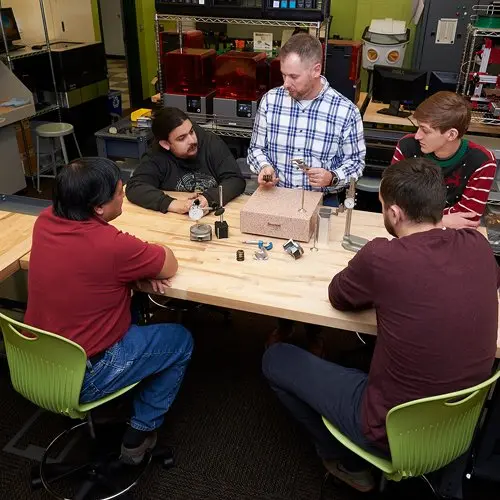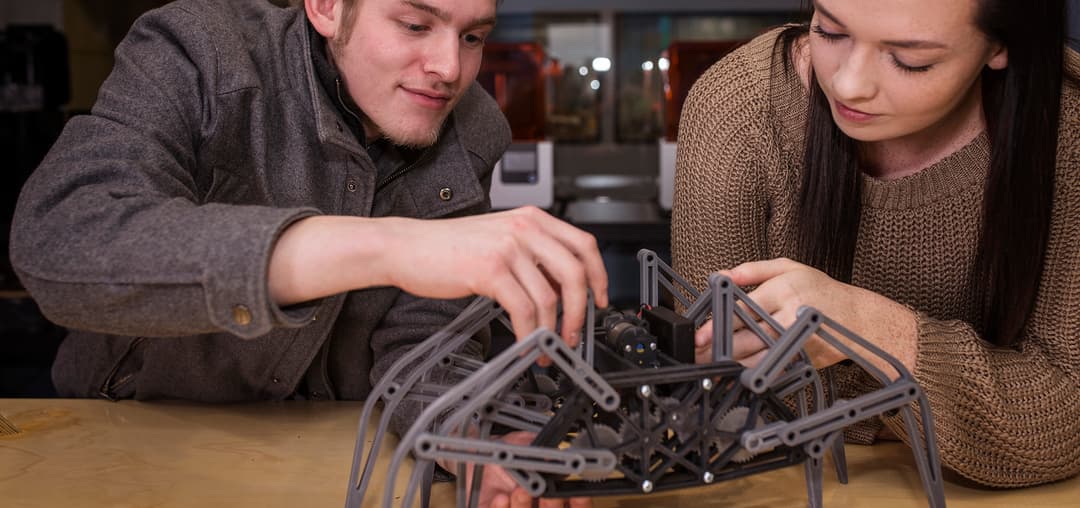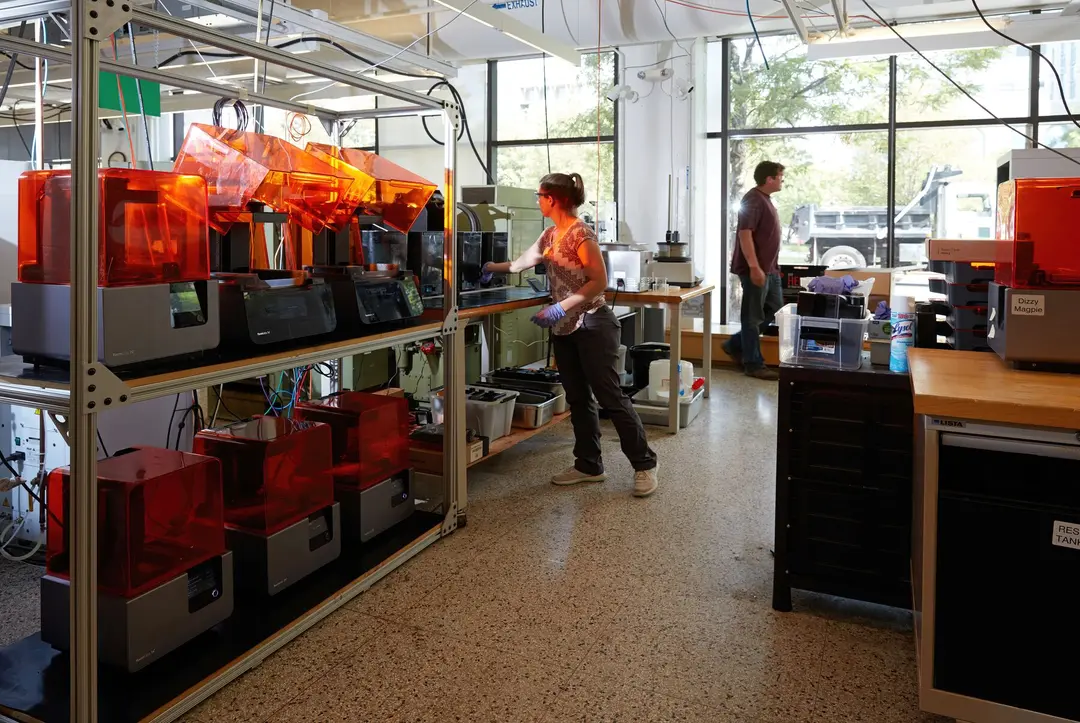Photo courtesy of Texas A&M Wind Tunnel
Wind tunnel testing is a critical part of wind engineering, providing the necessary design pressure measurements. Used for undergraduate education, engineering research and commercial testing, the Texas A&M Oran W. Nicks Low Speed Wind Tunnel conducts wind tunnel testing for a wide range of projects. These projects include bicycles with riders, golf clubs, light pole fixtures, airplanes, space re-entry vehicles, and more.
Lisa Brown, manager and engineer at the Texas A&M Wind Tunnel, helps customers develop their test plans, design the models, and create the code that helps them collect relevant data. For wind tunnel testing, selecting the right material is the difference between a seamless test and a cumbersome one. Brown and her team sought out Formlabs’ Rigid 10K Resin for replacing pieces on a NASA aircraft model test.

Guide to 3D Printing In Education
In this guide, we’ll discuss the benefits of 3D printing in education, from improved student collaboration to workforce development and empowered creativity.
About the Texas A&M Wind Tunnel
There’s never a dull moment at the Texas A&M Wind Tunnel. Brown recalls a project where the team researched a flapping helicopter blade and incorporated 3D printing in the test. “We go less than half the speed of sound. But if we go fast enough and the blades are flapping fast enough, you actually get shockwaves off the leading edge of those blades. And that's not what you want for helicopters. So we were actually able to see those shock waves happen in our low speed tunnel, which was really exciting,” Brown said. “3D printing was actually a part of that test as well. We had a small printed insert to that leading edge with some sensors inside of it. So the whole model was an aluminum wing with this little insert that we could replace.”
Since the Texas A&M Wind Tunnel works with clients across different industries with a broad range of applications, they have to be adaptable. “For our aerospace companies, they are typically looking for a broad characterization of their aircraft. And so they're looking at different stages of buildup. So they'll start with a basic bare fuselage and then add wings and then add a tail. And look at the force in moment effects of each one of those individual components. And then the overall stability and control of the aircraft. So how well is it going to fly? How does it react in certain situations? Can they use specialized sensors to determine the strength of the tailfin? What are the loads on just that tailfin? Then they can take that data back and figure out how to create that intersection so that it's going to be strong enough to withstand all the forces they expect to see,” Brown said. “For some of our other customers it's a lot simpler. We can look at things as simple as a city trash can. And they want to know at what speed is it going to roll down the streets or what speed do those lids start flapping open so that they can make sure that their product is as well suited for the market?”
Why Texas A&M Wind Tunnel Chose Rigid 10K Resin
According to Brown, the team has been looking at replacing some pieces on an aircraft model they tested for NASA a few years ago, starting with parts they originally printed in polycarbonate with a Fused Deposition Modeling (FDM) 3D printer.
They turned to SLA 3D printing with Formlabs to take advantage of materials like Rigid 10K Resin.
“We could directly compare the FDM to the Formlabs prints. That was a first big eye opener for us, is that the big difference in surface quality between the two. So we started there and then we started printing some parts that would replace the metal pieces that we had made. And so that was an interesting comparison as well, to see how close a printed version could approximate the metal tail surface that we had made here,” Brown said.
For wind tunnel testing, it was important for Brown and their team to have incredible surface quality with a smooth finish, in addition to being able to withstand deformation. Brown said they were impressed with Rigid 10K Resin.
“We do need the properties to be rigid enough that it's not going to deform. So another part of the outer mold line...is making sure that shape stays what it is. And so if we make a wing, we need to, if at all possible, make it to where that wing isn't going to bend under a load or change shape,” Brown said. “We're trying to keep the same model and the same shape throughout the whole testing...if we have a material that's too flexible, then it's not going to be suitable for a wind tunnel test.” Rigid 10K Resin fit the bill with its stiffness.
It was important for Brown to work with a material that allows air to flow over the smooth surface of the wings. “What we're really concerned with is that outer mold line or that outer shape that's touching the air flowing over it. That's why surface quality is such a big thing for us,” Brown said. “This material allows us with so much less hand finishing to get to a very beautiful, smooth finish. Very similar to what we'd see out of a metal machine part, but with a lot less human interaction with it than we'd have to do with machining it from scratch.”
What’s Next for Texas A&M Wind Tunnel
Brown said she sees more applications for Rigid 10K Resin that expand beyond the Texas A&M Wind Tunnel’s daily operations. The team recently purchased a Form 3 3D printer. Additionally, Rigid 10K Resin has a future in hypersonic testing at the Hypersonic Tunnel. “They've [Hypersonic Tunnel] used a lot of our FDM printed models of similar scale and size and they've worked well for them. But surface finish is another very sensitive topic...they want that perfect finish,” Brown said. “The properties that they know about the material [Rigid 10K Resin] are great for their application.”


